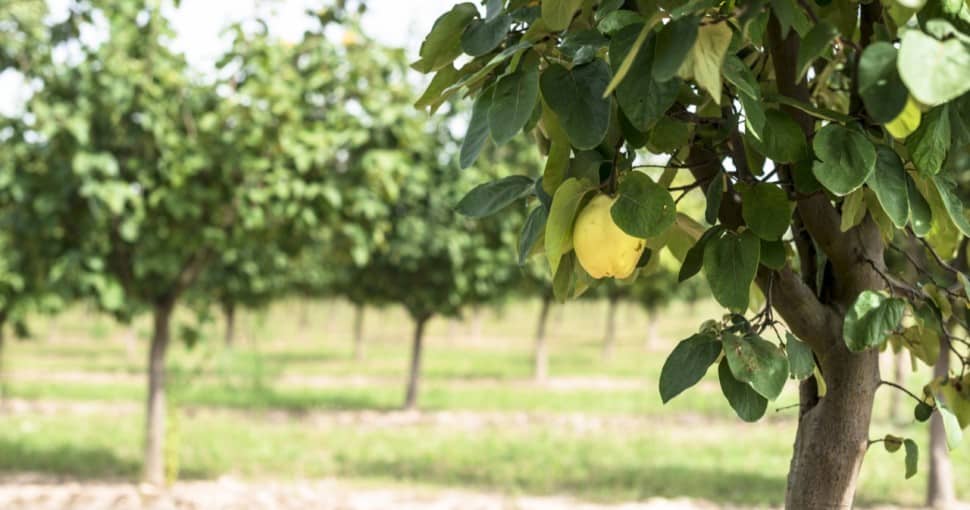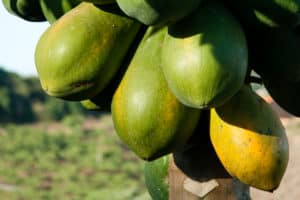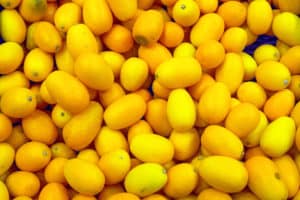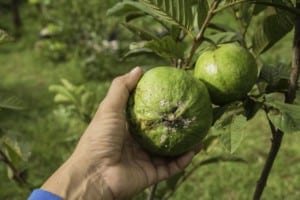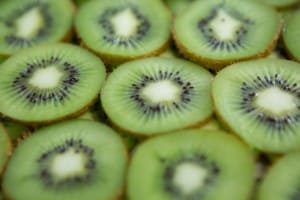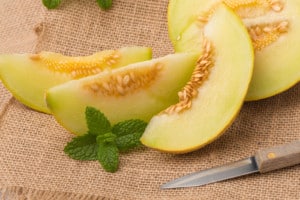Utah may be known for its majestic mountains, but it’s also home to some of the best fruit trees around! From apples and pears to cherries and peaches, Utah has a variety of fruit tree species that can be grown in any garden. Whether you’re looking for something sweet or tart, small or large, there is sure to be a fruit tree in Utah that will suit your needs. So if you’re ready to get growing, read on to find out the best fruit trees for Utah!
Contents
Fruit trees are an important part of Utah’s agriculture and help to provide food for the state. Fruit trees have been grown in Utah since the early settlers arrived, and today many varieties of fruit can be found throughout the state. Apples, pears, cherries, peaches, apricots, plums, nectarines, and more can all be grown in Utah.
Apples are one of the most popular fruit trees in Utah, as they can thrive in a variety of climates. There are many different varieties of apples that can be grown throughout the state, so it’s important to research which type is best suited for your particular location and climate.
Utah is home to a wide variety of fruit trees that can be grown in gardens or orchards. The climate in Utah allows for a variety of fruit trees to thrive, so it’s important to research which type is best suited for your particular location and climate.
1. Apple Trees
Harvest period: Early September – October
Height: 8-20 feet
Light: Full sun
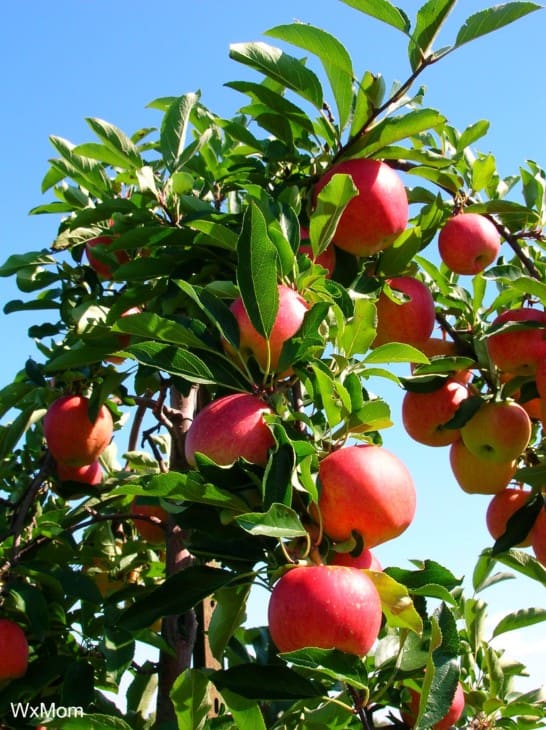
Apple trees are one of the most popular fruit trees in Utah, as they can thrive in Utah’s climate. There are many different varieties of apples that can be grown throughout the state, so it’s important to research which type is best suited for your particular location and climate.
Yes, you should plant an apple tree in your Utah garden. With proper planning and care, you can enjoy a bounty of fresh apples from your own yard!
2. Pear Trees
Harvest (Utah): Mid August – Late October
Height: Up to 30 feet
Light: Full sun or partial shade
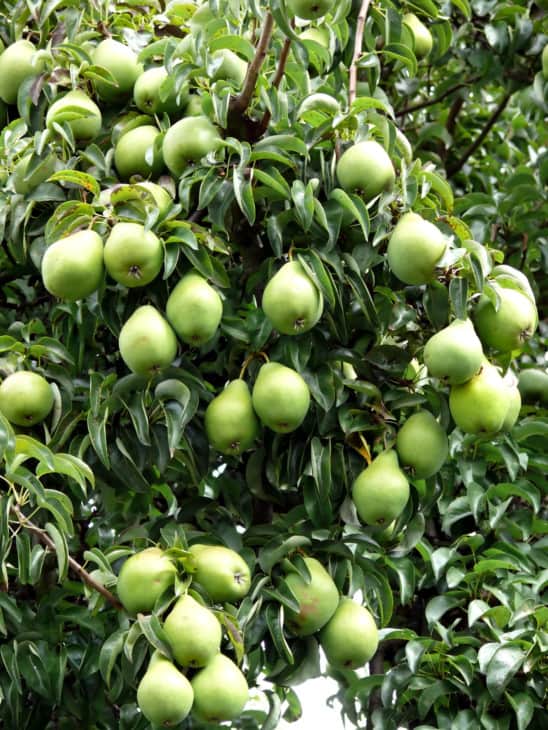
Pear trees are another great option for Utah gardeners. Not only are pear trees long-lived and hardy, but they can also produce delicious fruit for years! There are many different varieties of pears that can be grown in Utah, each with its own unique flavor. Although the majority of pear trees require at least 8 hours of direct sunlight, some varieties are more tolerant of shade and can also be grown in Utah.
Related: 26 Fantastic Flowering Pear Tree Varieties
3. Cherry Trees
Harvest (Utah): Early April – June
Height: 12-25 feet
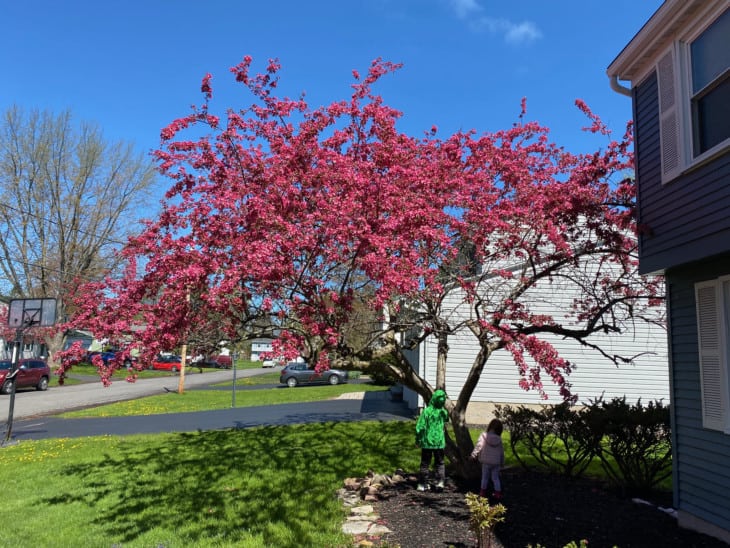
Cherry trees are a great choice for Utah gardeners, as they can produce delicious sweet cherries for years! This deciduous tree is one of the most popular fruit trees in the state and can grow in almost any soil type or climate. However, it is important to research which specific variety of cherry tree is best suited for your location and climate.
Related: 28 Sweet Cherry Tree Varieties
4. Peach Trees
Harvest (Utah): Mid May – Mid July
Height: 8-20 feet
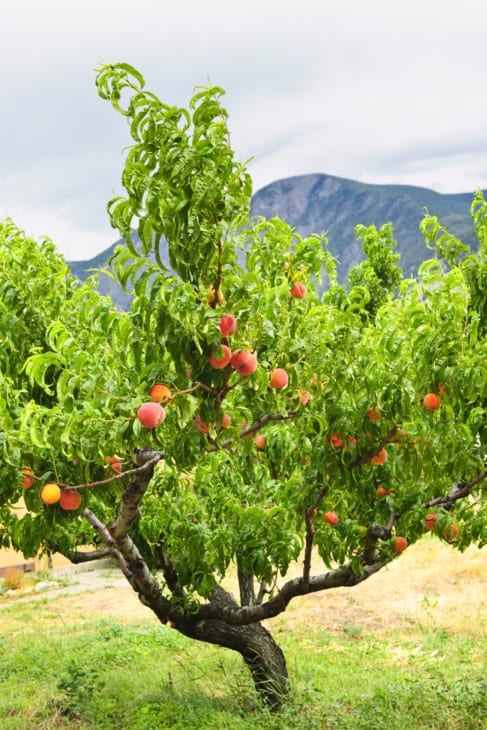
Peach trees are a wonderful choice for Utah gardeners, as they can produce sweet and delicious fruit in almost any climate! Like apple trees, there are many different varieties of peach trees that can be grown throughout the state. Peach trees have a tendency to be more fragile than other fruit trees, so it’s important to research which type is best suited for your particular situation.
Related: 10 Gorgeous Types of Peach Trees
5. Apricot Trees
Harvest (Utah): Late May – Mid July
Height: 12-20 feet
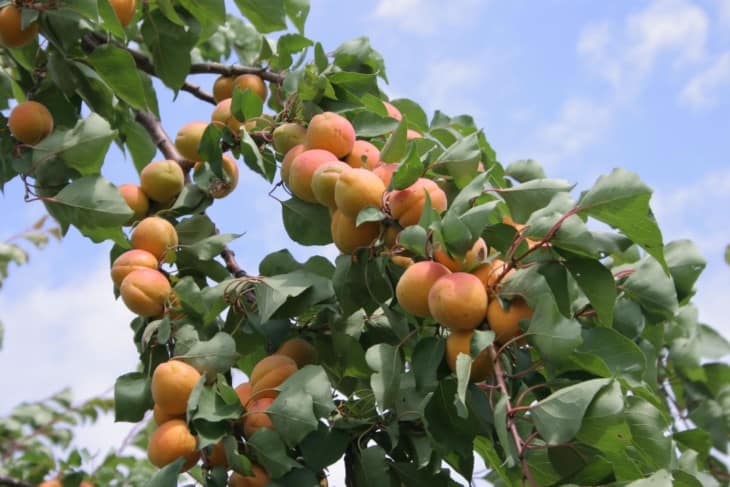
Yes, you can grow apricot trees in Utah. Apricot trees can thrive in Utah’s climate and produce delicious fruit for many years! However, it is important to research which specific variety of apricot tree is best suited for your location and climate. With proper planning and care, you can enjoy a bounty of fresh apricots from your own backyard!
Some varieties of apricot tree include the ‘Early Golden’ and ‘Harcot’. Both of these apricot varieties require full sun and well-draining, sandy soil. They are both also self-fertile, so you won’t need to worry about planting multiple trees in order to get a good crop of fruit.
6. Plum Trees
Harvest (Utah): Early June – August
Height: 12-20 feet
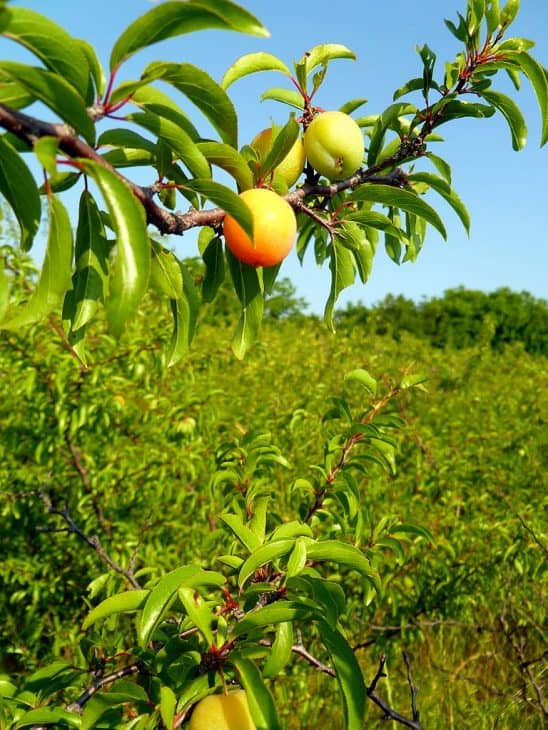
Plums are a great option for Utah, as they grow well in the hot summers and cold winters. They require minimal care and can produce a lot of fruit with proper pruning and fertilizing. The Santa Rosa plum tree is especially hardy and produces large, sweet plums that are perfect for preserves or fresh eating.
If you’re looking for something a bit different, the American Plum is an excellent choice. The fruit is smaller and has a tart flavor perfect for jams or jellies. Whatever variety you choose, plums are definitely worth considering when planting fruit trees in Utah. Plum trees are not self-pollinating, so you need to plant two in order for them to bear fruit.
Related: 23 Top Types of Plum Trees
7. Nectarine Trees
Harvest (Utah): Mid May – Mid July
Height and width: 10-12 feet
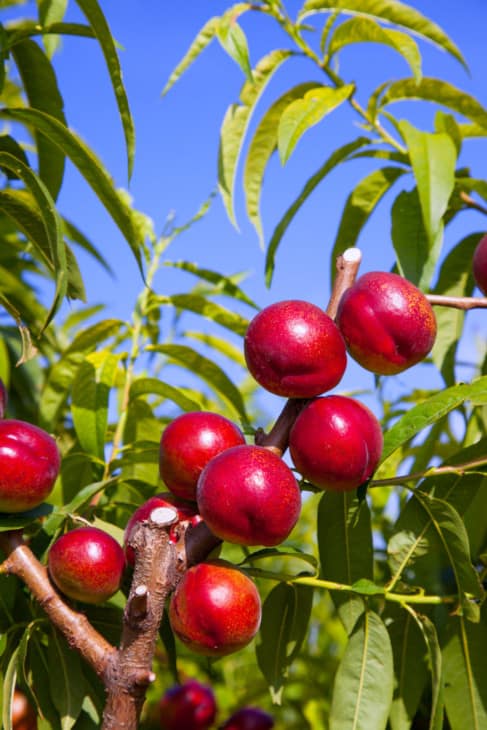
Nectarines are also a great choice for Utah gardeners, and they thrive in the state’s climate. The fruit of these trees is sweet and juicy, with thin skins that make them easy to eat fresh or use in baking. Choose from self-pollinating varieties like Fantasia or Flavor King for your backyard orchard. Be sure to plant in a sunny spot and water regularly for the sweetest, juiciest nectarines.
Related: 50 Different Nectarine Tree Varieties
8. Fig Trees
Harvest (Utah): Mid August – October
Height: 6-10 feet
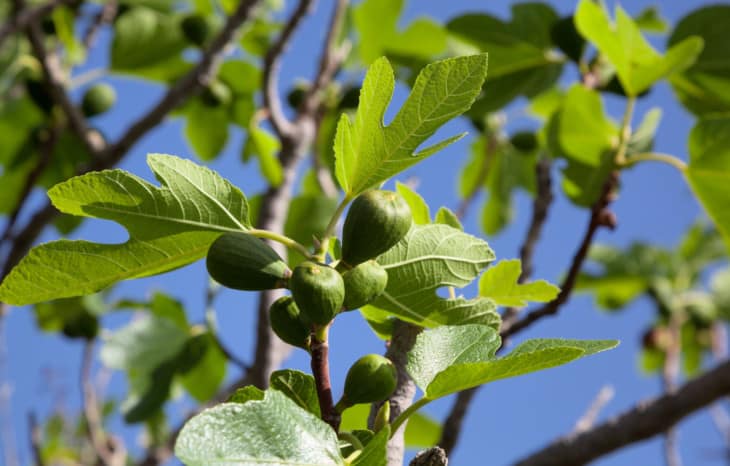
If you’re looking for something a bit more unusual, consider planting a fig tree in your backyard. Fig trees thrive in the hot summers and cold winters of Utah, and they don’t require much maintenance. For best results, choose varieties like Brown Turkey or Celeste that are suited to cooler climates. Plant near the south or west side of your home for maximum sun exposure and water regularly to keep the soil moist.
Related: 31 Fantastic Fig Tree Varieties
9. Plumcot Trees
Harvest (Utah): Mid June – Mid August
Height: 8-12 feet
Plumcots are a hybrid of plums and apricots, so they have the best qualities of both fruits. They’re sweet and juicy, with a soft texture that makes them perfect for baking or eating fresh. Varieties like Flavor Grenade or Flavor Princess grow well in Utah and can tolerate some cold weather. Plant your tree in an area with at least six hours of sunlight and water regularly for the sweetest, juiciest plums.
10. Persimmon Trees
Harvest (Utah): Late October – Early November
Height: 18-25 feet
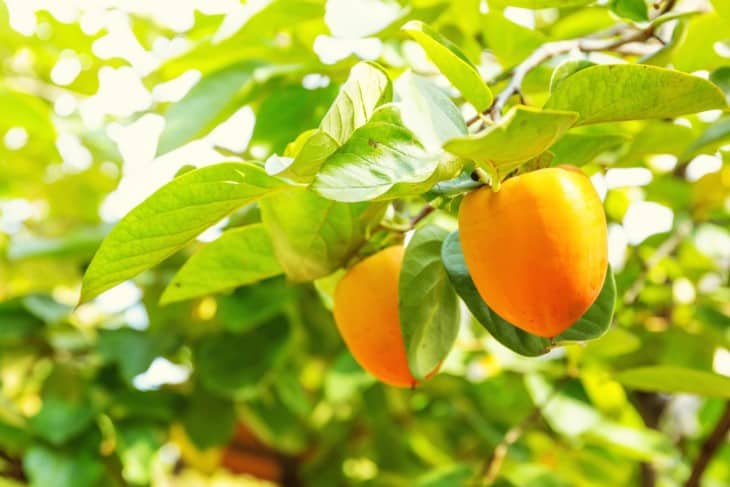
Persimmon trees are a great choice for Utah gardeners, as they’re tolerant of cold weather and require minimal maintenance. You can choose from two types of persimmons: astringent and non-astringent. The astringent variety needs to be fully ripe before eating, but the non-astringent types can be eaten when firm. Varieties like Peachy King and Pumpkin are especially well-suited for Utah’s climate and will produce sweet, juicy fruit that is perfect for baking or eating fresh.
The fruit of these trees are sweet, succulent and high in antioxidants. They also add a beautiful burst of color to any landscape with their bright orange leaves during fall months. These trees are adaptable to many soils and require little water.
11. Quince Trees
Harvest (Utah): Mid October – Early November
Height: 10-12 feet
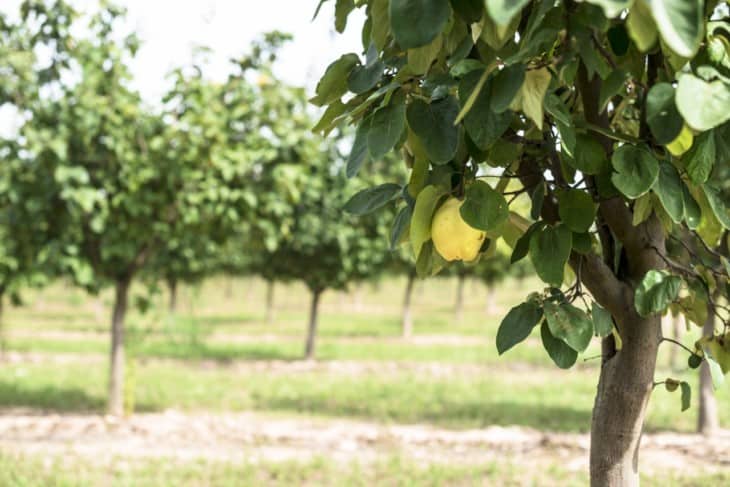
Quince trees are another great option for Utah gardens. They produce white flowers in the spring, followed by astringent-tasting fruits that can be used to make jams and jellies. Quince trees require minimal pruning and fertilizing, and they are tolerant of cold temperatures. These trees also provide habitat for beneficial insects such as honey bees and other pollinators.
Harvest quince in Utah when the fruit has developed a yellowish-brown color and can easily be plucked from the tree. Keep in mind that quince fruits need to be cooked before eaten as they are too acidic for eating raw.
Related: 21 Great Quince Tree Varieties for Fruit and Aesthetics
12. Pomegranate Trees
Harvest (Utah): Early September – Mid October
Height: 10-15 feet
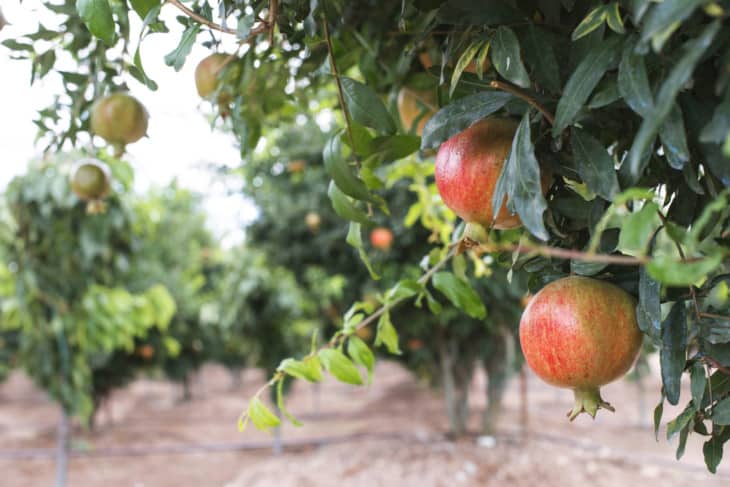
Pomegranate trees are a great choice if you’re looking for an ornamental tree that produces edible fruit. The crimson red fruits of these trees have sweet and tart flavors, with juicy seeds inside. It produces clusters of red fruits that are packed with flavor and nutrition.
The tree itself is beautiful, with glossy green leaves and fragrant blooms in spring and summer months. Pomegranates require very little care and maintenance, making them an easy choice for Utah gardeners. They are also remarkably drought tolerant and can withstand temperatures down to -20 degrees Fahrenheit.
Related: 18 Lovely Pomegranate Tree Varieties
13. Mulberry Trees
Harvest (Utah): Mid June – Early August
Height: 10-20 feet
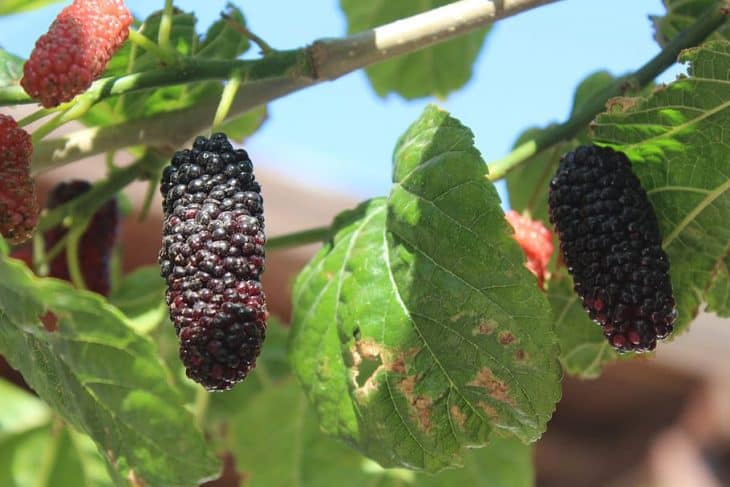
Mulberries are relatively easy to grow in Utah, provided they are planted in well-drained soil and kept moist during dry spells. These trees can reach heights of up to 30 feet with their spreading branches and dense foliage, providing excellent shade for your garden.
Mulberry fruit is sweet and juicy, and can be eaten fresh or used in jams and pies. Planting a mulberry tree in your backyard is an excellent way to enjoy the delicious fruit of this versatile tree.
Related: 26 Different Types of Mulberry Trees
14. Jujube Trees
Harvest (Utah): Mid August – Early October
Height: 10-20 feet
Jujube trees are another great option for Utah gardeners. These hardy trees can withstand temperatures down to -10 degrees Fahrenheit and require little pruning or maintenance. The fruits of jujube trees look like apples, with a crunchy texture and sweet flavor. They also make excellent jams and jellies, as well as dried fruits. Plant your tree in a sunny spot away from other trees and water regularly for the sweetest, juiciest fruits.
15. Asian Pear Trees
Harvest (Utah): Mid August – Early September
Height: 15-20 feet
Asian pear trees are a great choice if you’re looking for an abundant and reliable crop of fruit. These hardy trees are resistant to disease and tolerant of cold climates. They grow in any soil type and require minimal pruning or maintenance. The fruit of Asian pear trees is crisp, juicy, and sweet, making it perfect for eating fresh or baking into pies. Plant your tree in an area with at least six hours of sunlight for the sweetest fruit.
With so many wonderful options, it’s easy to find the perfect fruit tree for your Utah garden. Whether you want a tart-tasting quince or a juicy pear, there’s sure to be something to suit your taste and climate.
FAQ
What fruit trees are self pollinating in Utah?
Most pear, apple, and cherry trees are self-pollinating in Utah. However, plum and apricot trees will require cross pollination from a second variety of the same species.
What is the best time to plant fruit trees in Utah?
The best time to plant fruit trees in Utah is during the fall months when temperatures are cooler and soil is moist. This will give the trees time to establish their roots before winter arrives. Planting in early spring is also an option but can be difficult if the ground is still frozen.
How much space do fruit trees need in Utah?
Fruit trees typically require 10-15 feet of space between them for optimal growth. This is important because overcrowding can stunt the growth of the trees, leading to poor fruit production. Additionally, make sure to plant your tree in an area that receives at least six hours of sunlight per day for healthy fruit development.
What is the best type of soil for fruit trees in Utah?
Fruit trees prefer well-drained soil that is high in organic matter. Sandy loam soils are ideal for most fruit trees, as long as they’re kept moist during dry spells. Adding compost to the soil can help create richer and more fertile conditions for your tree.
Are there any special care instructions for fruit trees in Utah?
Yes! Fruit trees require regular watering during dry spells and should be pruned regularly to keep them healthy. Additionally, it’s important to apply mulch around the base of the tree to help retain moisture and prevent weeds from taking over. Fertilize your tree with a low-nitrogen fertilizer each spring for optimal growth. Finally, always check with your local gardening center for any special care tips specific to your region.

